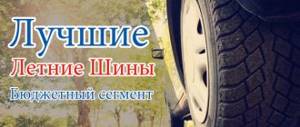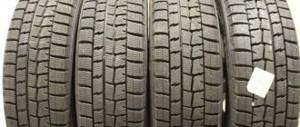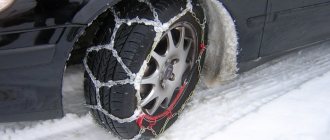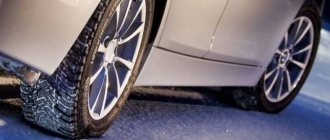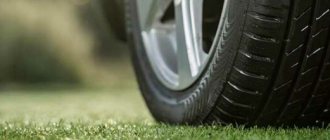| Place | Name | Characteristics in the rating |
| The best inexpensive Velcro: budget up to 4,000 rubles |
| 1 | Cordiant Winter Drive | Best price |
| 2 | Goodyear Ultra Grip Ice+ | Optimal balance of driving characteristics |
| 3 | Toyo Observe Garit GIZ | High wear resistance |
| 4 | Pirelli Ice Zero FR | The most comfortable |
| The best Velcro in the mid-price segment: budget up to 7,000 rubles |
| 1 | Bridgestone Blizzak Revo GZ | Optimal performance |
| 2 | Nokian Tires Nordman RS2 | Better handling on ice and snow |
| 3 | Triangle Group Snow PL01 | High level of reliability |
| 4 | Yokohama Geolandar I/TS G073 | The safest tires |
| The best Velcro in the premium segment: budget from 7,000 rubles |
| 1 | Continental ContiViking Contact 6 | Top choice by users |
| 2 | Michelin Latitude X-Ice 2 | Shortest braking distance on ice |
| 3 | Bridgestone Blizzak VRX | Optimal handling on asphalt |
| 4 | GOODYEAR Ultra Grip Performance Gen-1 | The quietest and most economical |
| Best Velcro for SUVs |
| 1 | Bridgestone Blizzak DM-V2 | Best off-road tire |
| 2 | Hankook DynaPro i*cept RW08 | Predictable behavior on any road |
| 3 | Nokian Tires WR SUV 4 | New on the market. The most reliable grip on the road |
Types of winter tires
Tires are one of the main elements of any car, or rather, its wheels. They ensure the car's contact with the road and help reduce the amount of vibrations you feel while driving on the road surface. They are made of rubber, fabric and metal, quite rigid and at the same time elastic. Tires have a tire, a rim tape, and can also be equipped with a tube if we are not talking about a tubeless version.
Depending on the purpose and conditions of use, tires can have not only different sizes, but also certain technical characteristics. And the safety of the driver behind the wheel of a moving car largely depends on how well the tire performs its functions. Summer and winter options are very different in their properties.
In Russia the climate is quite harsh in winter. And it is very difficult for motorists to feel confident and safe in winter. On the roads at this time of year you can encounter blizzards and snowstorms, drive on clean asphalt, and then immediately jump out onto an icy area. And in any situation, every person behind the wheel wants to feel as confident as possible. In many ways, the safety of the motorist and the passengers of his car depends precisely on the correctly selected high-quality tires on the wheels.
Summary of winter tires
It used to be easier - there was no such choice of tires as there is now. Nowadays, the market offers a huge number of models. How to choose a decent option that definitely won’t let you down? You need to know the main types and characteristics of tires and select them, focusing not only on your driving style, but also on natural conditions.
Interestingly, according to the law, it is prohibited to use summer tires in winter. No matter how experienced a driver you are, driving on such wheels increases the risk of getting into an accident, which means the danger on the road in general increases. That is why a traffic police officer has the right to stop and fine you if you are driving in winter on summer tires. Until 2020, by the way, driving a winter car in the summer was also prohibited.
In this article we are talking specifically about winter tires. So, first you should know that there are two main types of winter tires. These are studded tires and so-called Velcro. Both of them are used in winter. Winter options are marked in the form of a snowflake.
Tire markings: what the letters and numbers mean
There are all-season tires. It has a certain mark - AS. You can ride it at any time of the year. The most important thing is that the tread depth should not be less than 4 mm. Tires with a less deep, worn out tread are prohibited from being used.
And the M+S marking means that the tires are definitely suitable for use in both snow and mud. By the way, this is why such tires are usually also considered all-season.
On a note! Any winter tires are quite soft compared to summer tires. It is not suitable for warm weather, since when heated it will simply “jump over” all permissible levels of softness, and this will affect the car’s handling and, accordingly, traffic safety.
Video - Tire marking
Characteristics of studless tires (“Velcro”)
First, let's talk about studless tires. These are the same Velcro that are also called friction tires. Now they are gaining more and more popularity. Motorists in big cities especially love them. And in Europe, in some countries, this is the only option for winter tires, because studded wheels are simply prohibited there by law.
Example of a friction tire tread
Such tires remain quite soft in the cold and do not harden, like summer tires, for example, if you leave them on the car until it gets cold. And because of their softness, despite the absence of studs, they cannot be used in warm weather - the tires will quickly wear out. In the cold season, they do not lose their properties and softness up to -20 degrees inclusive. Tires are made of a special material, which is why they have such properties. A certain pattern allows water to be well drained from under the wheels, and the wheel itself acquires excellent traction with the road surface, as if sticking to it - hence the name “Velcro”. Such a tire brakes effectively due to its specific coating and special chemical composition.
Experts in the automotive world note that in many of their parameters, under certain conditions (on dry and wet asphalt), Velcro are much superior to conventional studs. Their main advantages:
- no noise while driving;
- better car handling;
- fuel consumption is reduced;
- minimum vibration in the cabin;
- high stability on wet asphalt;
- long service life - up to 8 years, subject to operating rules.
But don’t think that Velcro is perfect. They do have disadvantages. For example, on ice and in snowy winter conditions they behave much worse on the road. So we can conclude that such tires are ideal for mild European winters, but they are not so well suited for cold snowy regions.
Velcro on the snow
There are two types of Velcro on sale - Scandinavian and regular, European. The first one is also suitable for difficult weather conditions.
Table. Types of Velcro.
| View | Description |
| Scandinavian | This option was created just for harsh winters and snowy roads. In general, this tire performs well in difficult situations, but in some cases it is still inferior to studded options in terms of car handling. And its braking distance is still longer than that of studded tires. Markings - Q, R and T. This type of tire is also called arctic. In general, this option can be used in the harsh northern regions of the Russian Federation. Scandinavian tire models will perform relatively well at very low air temperatures. |
| European | This Velcro is exclusively for mild winters. It can be safely used where in the cold season the air temperature rarely drops below -5 degrees. It showed itself ideally in the south of Russia and somewhere in the Rostov region or Krasnodar region. Markings - N and V. It behaves very poorly on ice, and also did not perform well on a snowy road. |
Important! In some Russian regions, car owners using the Scandinavian version of Velcro are required to use the “spikes” sign on the car. This point needs to be clarified in each region separately.
European and Scandinavian Velcro
If you want to purchase Scandinavian type Velcro, considering it the most optimal, then try to make sure that the seller does not deceive you. To do this, you need to know just a few features of the choice: if the tires are designated as for mild winters, then this is a Euro option. Scandinavians have soft treads and many small sipes. European tires are more round in shape, while Scandinavian tires are somewhat angular in cross section. And look at the speed index: Europeans are marked with the letters H and V, Scandinavians - R, Q, T.
Characteristics of studded tires
Studded tires, as you might guess, have a lot of metal studs of various configurations along the entire plane of the wheel. It is thanks to them that it brakes perfectly and ensures confident movement of the car on ice or snow, and makes it possible to take turns perfectly even on slippery roads. But on asphalt, such tires demonstrate much worse handling, in contrast to the same Velcro. Also, the disadvantages include the high level of noise created by the spikes while the car is moving, and increased fuel consumption. In Russia, if you use studded tires, you must put a “spikes” sign on your car.
Tire stud device
Attention! Studded tires behave very poorly on roads treated with chemicals.
Table. Types of spikes.
| Spikes type | Description |
| Round | The simplest option. These are the kind of studs that can be seen on most studded tires. The main and, perhaps, even the only advantage is the low price of such studs. The degree of grip on ice on the road is low. |
| Oval | Improved round studs that increase the contact area of the wheel with the road, and therefore increase the level of grip. A car with tires equipped with such studs behaves better on the road, and the wheels are less noisy than with the previous version. |
| tetrahedral | The spikes were invented by Nokian. They have sharp edges and edges that allow the wheels to literally bite into the road surface. One of the best options. Excellent stability of the car on the road is practically guaranteed. But the cost of tires with such studs is high. |
| Hexagonal | The so-called diamond thorns. They have even more edges than the previous version, which means the stability of the wheels on the road increases. Disadvantages - the edges of such studs quickly wear out, and the rubber with them is very, very expensive. |
Types of studs for tires
Studded tires can differ not only in shape, but also in the number of studs. There are approximately 50 of them per 1 square meter of tire. That is, on a wheel with a diameter of 16 inches there will be approximately 100 units.
The noise while driving, by the way, is caused precisely by the clicking of the spikes on the asphalt. But now there are studded tires, the studs on which can “hide” in the rubber while driving under the weight of the car. Naturally, they make much less noise. And yes, they also perform much better on bare asphalt, while still providing excellent traction on snowy or icy roads.
In general, it is on studded wheels that drivers feel the most confident in winter. They understand that the stability of the car on the road, especially in severe winter conditions, is higher in this case than when using Velcro. But do not forget that the main condition for the safety of any person on the road is attentiveness, accuracy and caution, and not just good, reliable tires.


